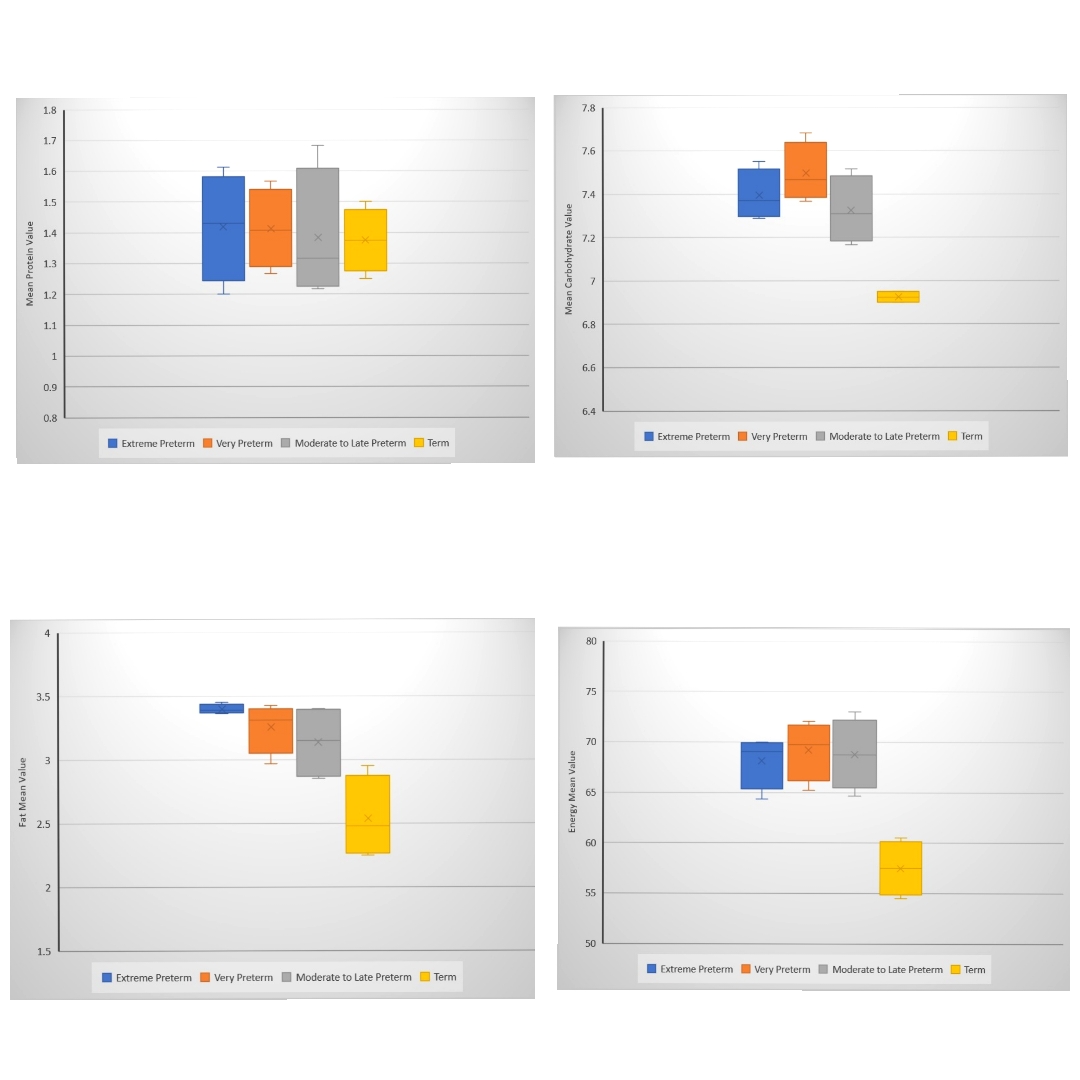Breastfeeding/Human Milk
Neonatal GI Physiology & NEC 4: Gut Health, Enteral Nutrition and Oral Feeding
78 - Longitudinal Analysis of macro-nutrient composition in preterm and term human milk
Publication Number: 78.236
- SN
Sushma Nangia, MBBS, MD, DM (she/her/hers)
Professor
Lady Hardinge Medical College & Kalawati Saran Children's Hospital
New Delhi, Delhi, India
Presenting Author(s)
Background:
Mothers' own milk (MOM) is tailor-made, highly specific and personalized as per the infants' own needs. It has myriad of benefits for the biologic infant. The nutrient composition of human milk varies with gestation age and with the stage of lactogenesis. Prior knowledge of the nutritional content can help clinicians in optimizing the provision of nutrients via fortification, as per the need of preterm infants.
Objective:
This study was conducted to analyse and compare longitudinally the trend of the macro-nutrient content of human breast milk over the first 4 weeks of lactation in mothers of extreme preterm (25-27+6 weeks), very preterm (28-31 6/7 weeks), moderate to late preterm (32-36 6/7 weeks) and term (>37 weeks) infants.
Design/Methods:
Milk samples from a total of 28 mothers were collected longitudinally at 4-time points during the first 4 weeks of lactation. Among these 28 mothers, 8 mothers delivered extreme preterm neonates, 12 very preterm, 6 moderate to late preterm and 2 mothers gave birth to full term neonates. The macro-nutrient composition of human milk from these mothers was analyzed using a mid-infrared human milk analyzer.
Results:
One hundred and twelve milk samples were analyzed. Large inter and intra-subject variations were evident among all the gestation categories analyzed. A gradual decrease in the protein content of human milk was observed from birth to four weeks across all the gestation age groups. Although not significant, the protein content of MOM of the mothers who delivered at preterm gestation was relatively higher than that of the mothers who delivered at term gestation. In contrast to this, the carbohydrate content continued to be nearly constant throughout the first 4 weeks with a significantly higher value in preterm milk than in the term milk (p< 0.05). Preterm milk was significantly rich in energy and fat content as compared to term infants. While comparing longitudinally the fat content of extremely preterm and term infants gradually increased from the first to fourth week of lactation whereas, in the very preterm and moderate to late preterm infants, a declining trend of fat content was noticed. No definitive trend was noticed in the energy content across various gestational ages.
Conclusion(s):
Longitudinal measurements of macro-nutrient compositions of the preterm and term milk showed subtle differences across gestation in our population. This study provides definite insight to the clinician regarding the need for assessing the composition of milk and optimization of preterm nutrition as per the period of lactogenesis and growth needs of the infant.

